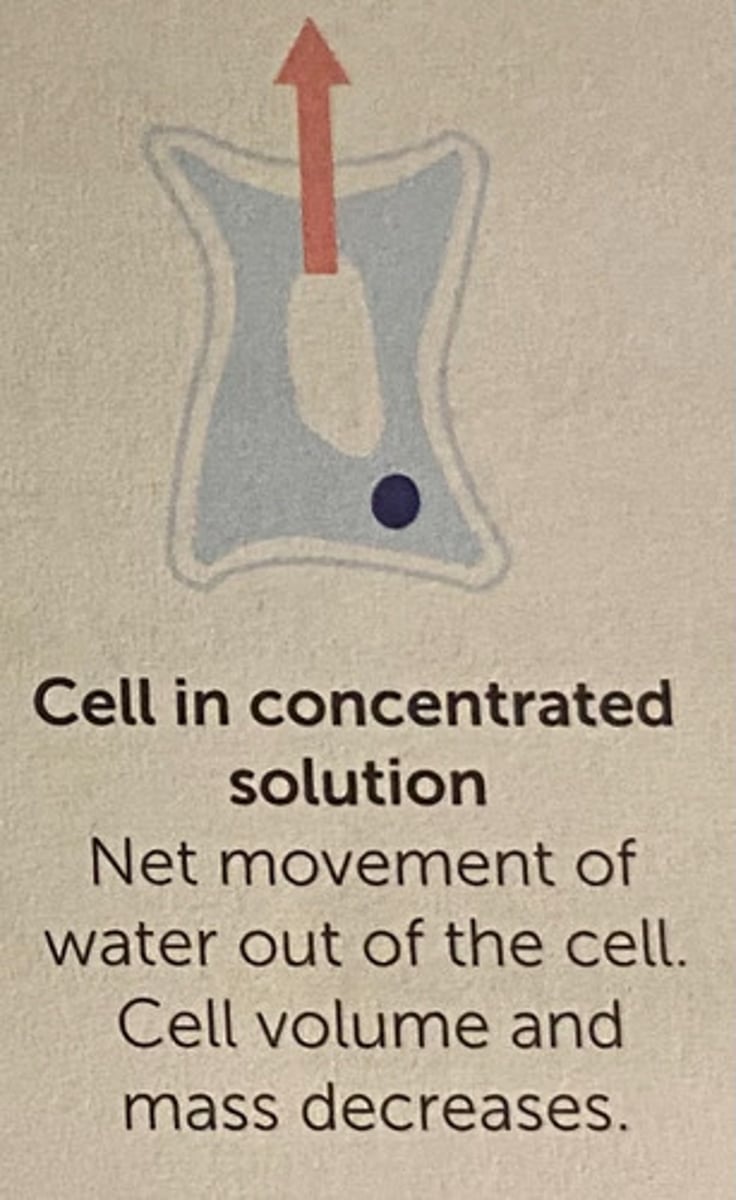AQA Higher Biology Paper 1
1/392
There's no tags or description
Looks like no tags are added yet.
Name | Mastery | Learn | Test | Matching | Spaced |
|---|
No study sessions yet.
393 Terms
What are the structures inside cells called?
sub-cellular structures
What sub-cellular structures are found in an animal cell? (5 points)
- nucleus
- cyptoplasm
- cell membrane
- mitochondria
- ribosomes
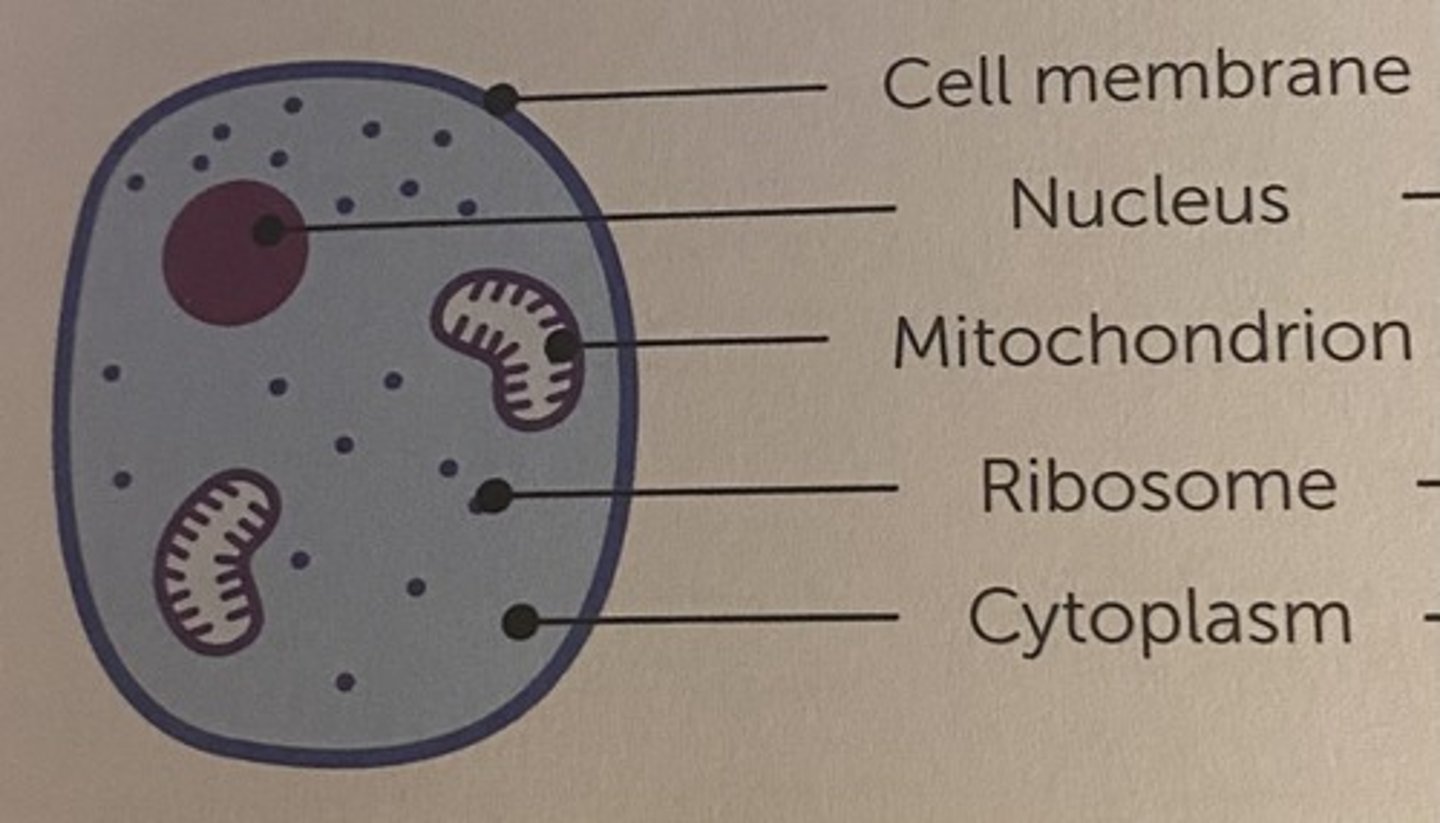
What does the nucleus do? (2 points)
- controls the activities of the cell
- contains the genetic material
What does the cytoplasm do? + it's structure?
- where most of the chemical reactions take place
- gel like, composed of nutrients
What does the cell membrane do? + it's structure?
- controls the passage of substances into and out of the cell
- partially permable
What does the mitochondria do? + it's structure?
- where aerobic respiration takes place
- large internal surface area for reactions
What do the ribosomes do?
- where proteins are synthesised (made)
What do plant cells have that are specialised for them? (3 points)
- cell wall
- vacuole
- chloroplasts
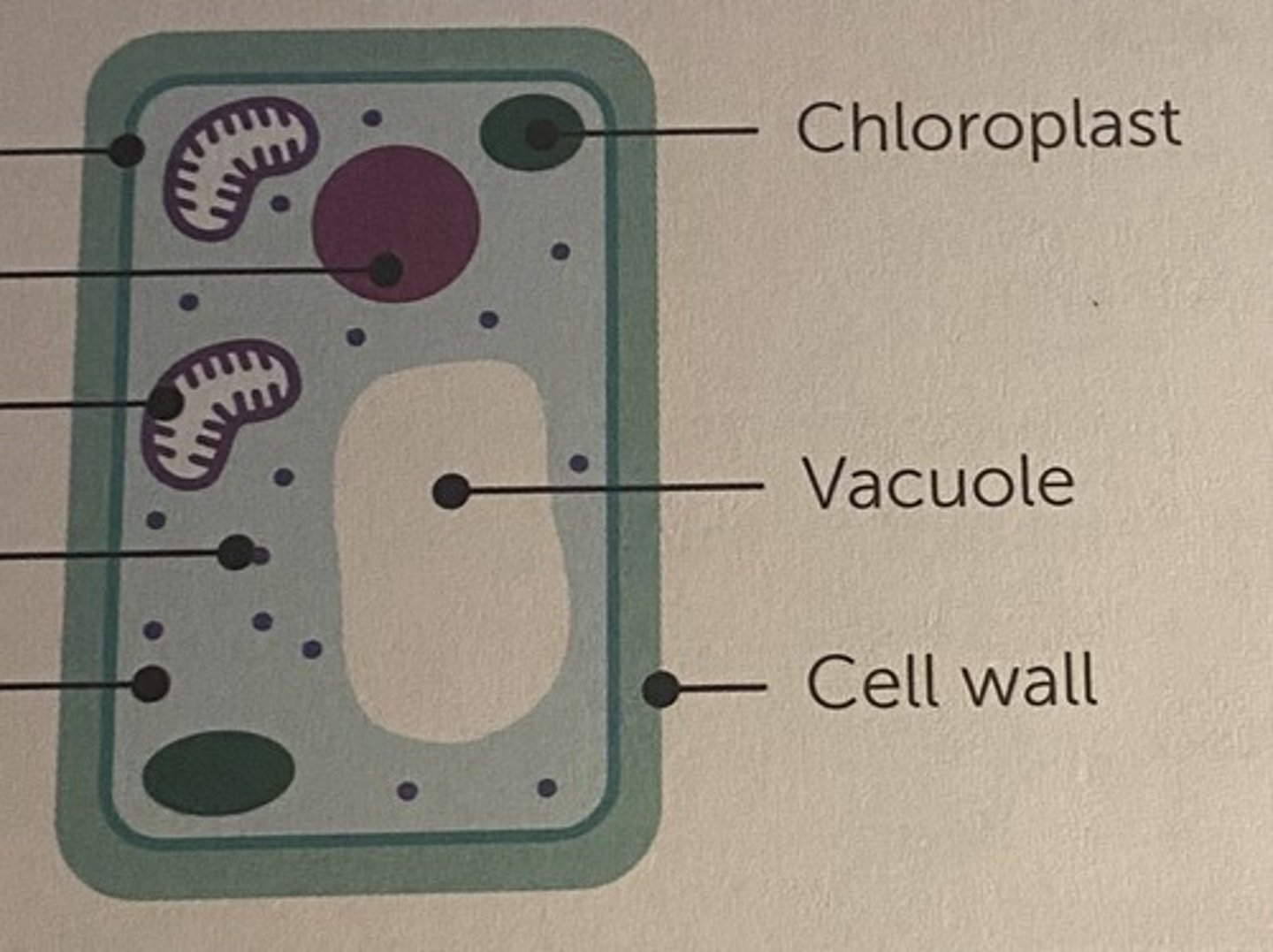
What is the cell wall? (2 points)
- made of cellulose
- strengthens the cell
What does the vacoule do? (2 points)
- filled with cell sap
- supports the plant
How do plants make their own food?
Chloroplasts make food by photosynthesis
What does the chloroplast do? + it's structure?
- absorb light to make food (glucose) by photosynthesis
- contains chlorophyll pigment
What two types of cells are there?
- prokaryotic
- eukaryotic
What is a eukaryotic cell?
- a cell that has a nucleus and sub-cellular organelles (plant + animals)
What is a prokaryotic cell?
- organisms that do not have a nucleus or organelles (bacteria)
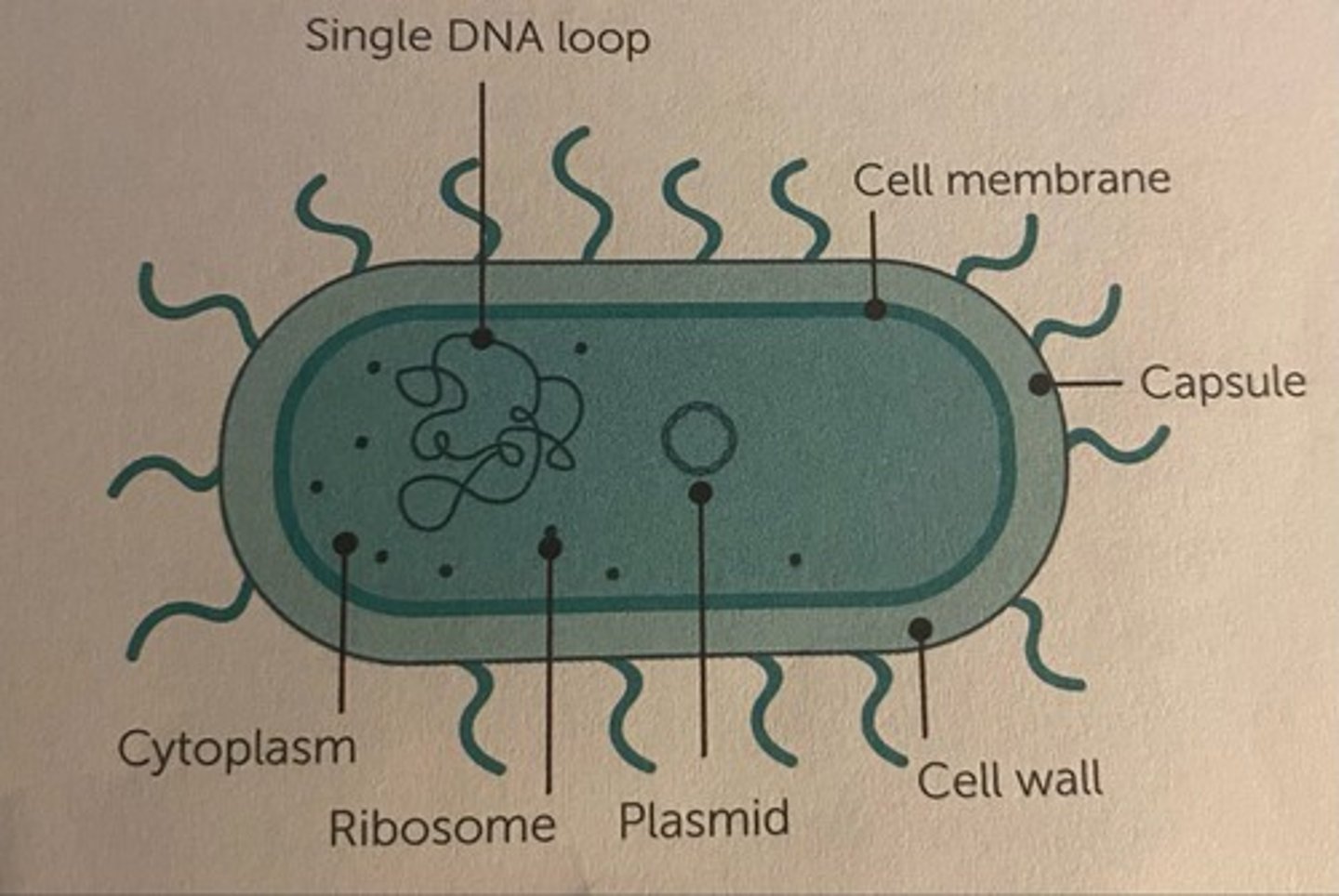
What are key features of a prokaryotic cell? (4 points)
- smaller in size
- genetic material is not enclosed in a nucleus
- genetic material is a single DNA loop - may be one or more small rings of DNA called plasmids
- no mitochondria or chloroplasts
What does the cytoplasm do in a bacterial cell?
- takes over the roles of the mitochondria and chloroplasts
What are flagella?
- tail-like structures that move the bacterium
What are plasmids?
- small rings/loops of DNA
What do plasmids allow?
- bacterial cells to move genes from one cell to another (move them)
How big would the typical plant cell be?
- 0.1mm in diameter
How big would the typical animal cell be?
- 0.02mm in diameter
How big would the typical bacterial cell be?
- 0.002mm in diameter
What are the units used to measure how small these are? (4 points)
- unit - number of units in 1m
- centimetre - 100 (hundreds)
- millimetre - 1,000 (thousandth)
- micrometre - 1,000,000 (millionth)
- nanometre - 1,000,000,000 (billionth)
resolution meaning? + example
- a measure of the smallest distance between two points that can still be distinguished
- image with poor resolution will be blurred if magnified further
magnification meaning?
how many times larger the image is than the actual size of the object being viewed
What are the two types of microscopes called?
- light
- electron
Which microscope do students use?
- light microscope
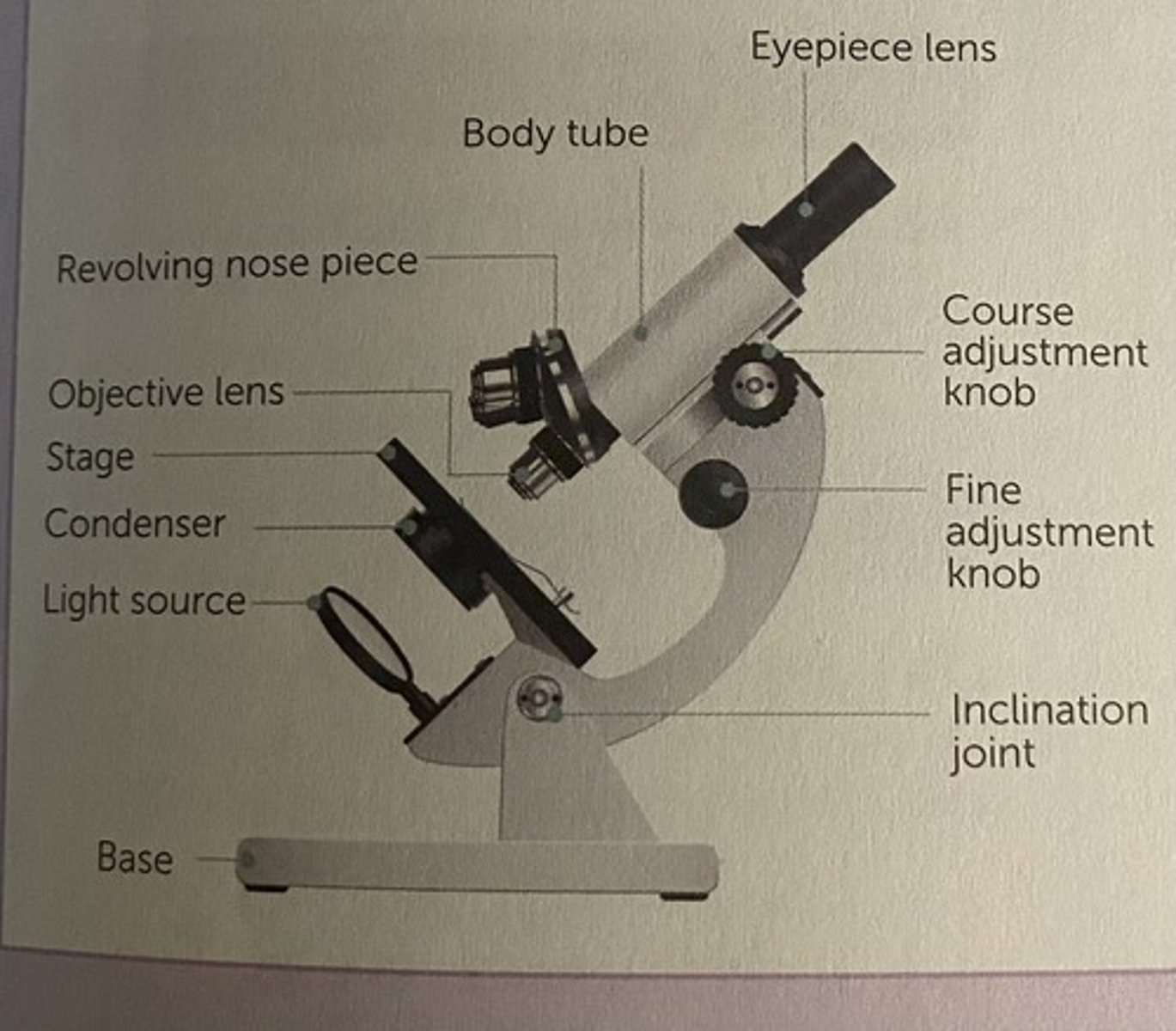
How does an electron microscope work? (2 points)
- passes electrons (rather than light) through the specimen
- gives better resolution, higher magnification
what did the invention of the electron microscope lead to?
discovery of new sub-cellular structures that couldn't be seen with light microscope
How do you calculate magnification?
magnification = size of image / size of real object
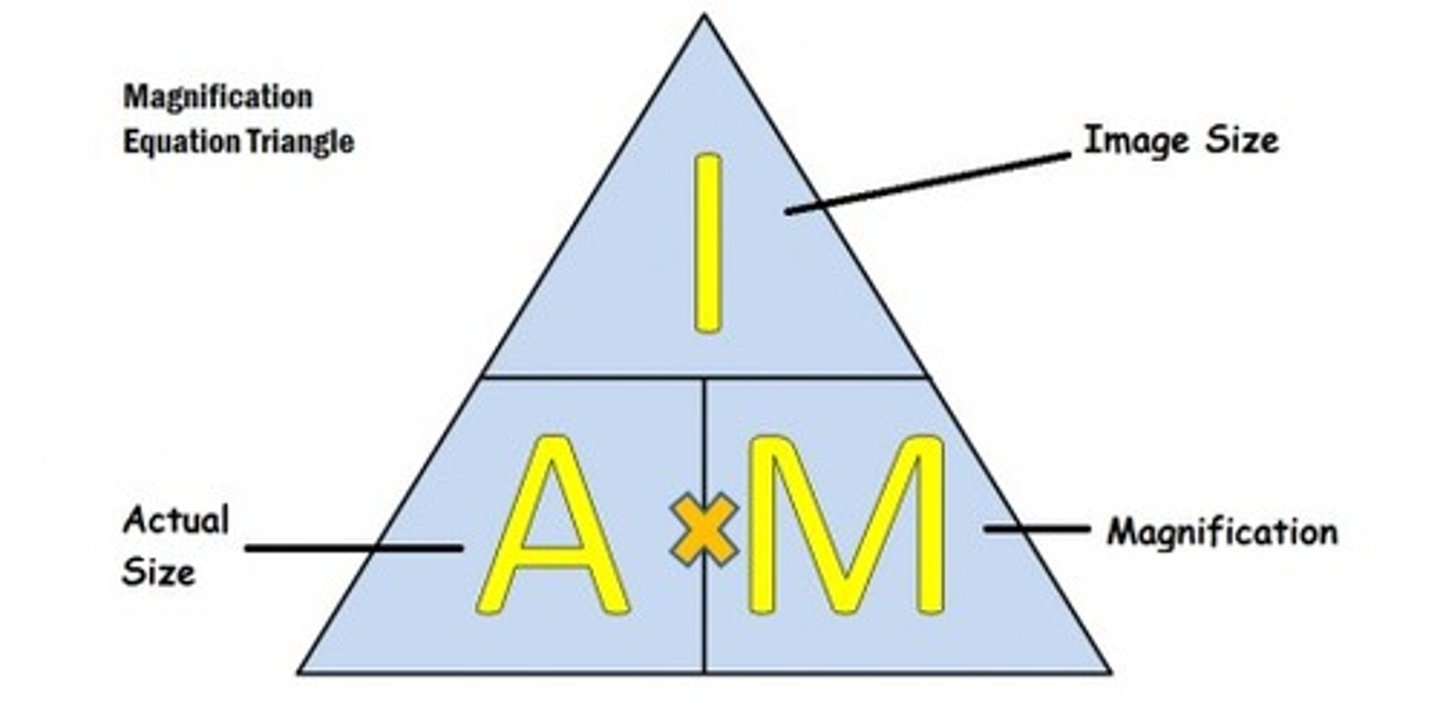
What does bacteria do to multiply?
a type of simple cell division called binary fission
- example of asexual reproduction
What do bacteria need to multiply? how often can they?
- nutrients
- suitable temperature
- double in number as often as every 20 minutes
What can bacteria be grown in?
- type of jelly called agar
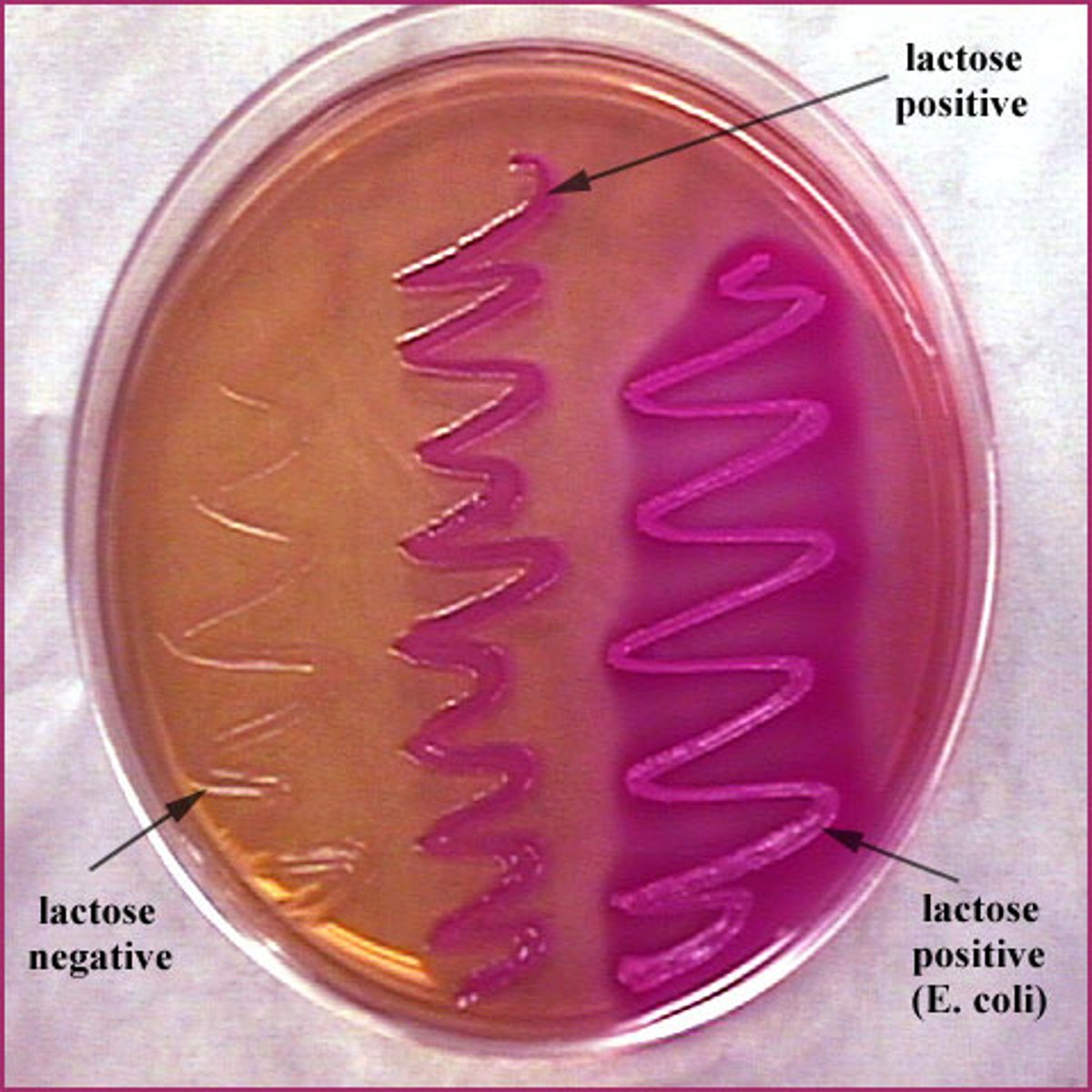
What is a colony of bacteria called?
culture
Where is the agar put into to start a culture?
petri dish
precautions taken to prevent contaminating a culture with microorganisms?
- culture incubated at 25•C to reduce likelihood of growth of harmful bacteria
- sterilise inoculating loops through Bunsen burner to kill microorganisms
- lid quickly removed + secured with tape
- store dish upside down to stop condensation dripping from lid onto the culture or causing leaks with harmful microorganisms
two diagrams of how bacteria can be grown?
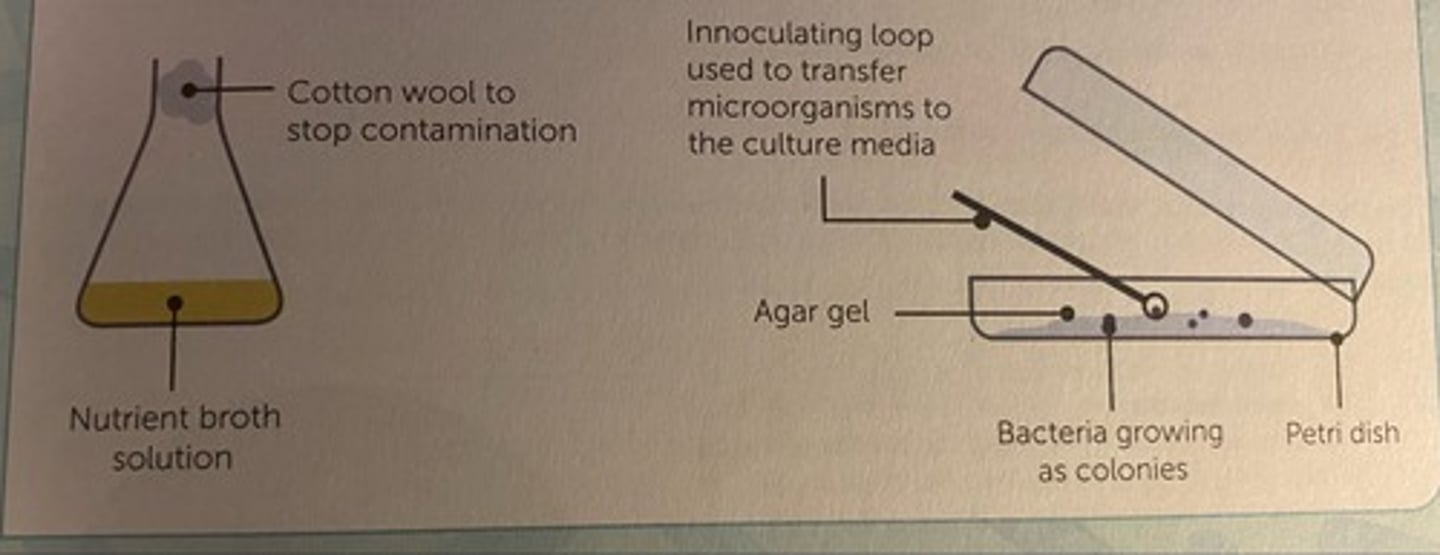
What is the process in which you prepare an uncontaminated culture?
aseptic technique
What is the inocolulating loop used for?
transfer bacteria to the agar
Why can't viruses be grown in agar?
they need living cells to reproduce
How do you calculate the area of a colony?
Using A=πr^2 (area of a circle)
How do you calculate the number of bacteria?
- do it as bacteria/time
RP investigating the effect of antiseptics/antibiotics on bacterial growth method?
1. spreader used to distribute bacteria across agar
2. plate incubated, place small paper disks (containing solutions of antibiotics/antiseptics) these will diffuse out into the agar
3. as bacteria divide/grow Agar becomes cloudy
4. when no bacteria agar is clear around disc (substances will have killed/stopped growth of bacteria)
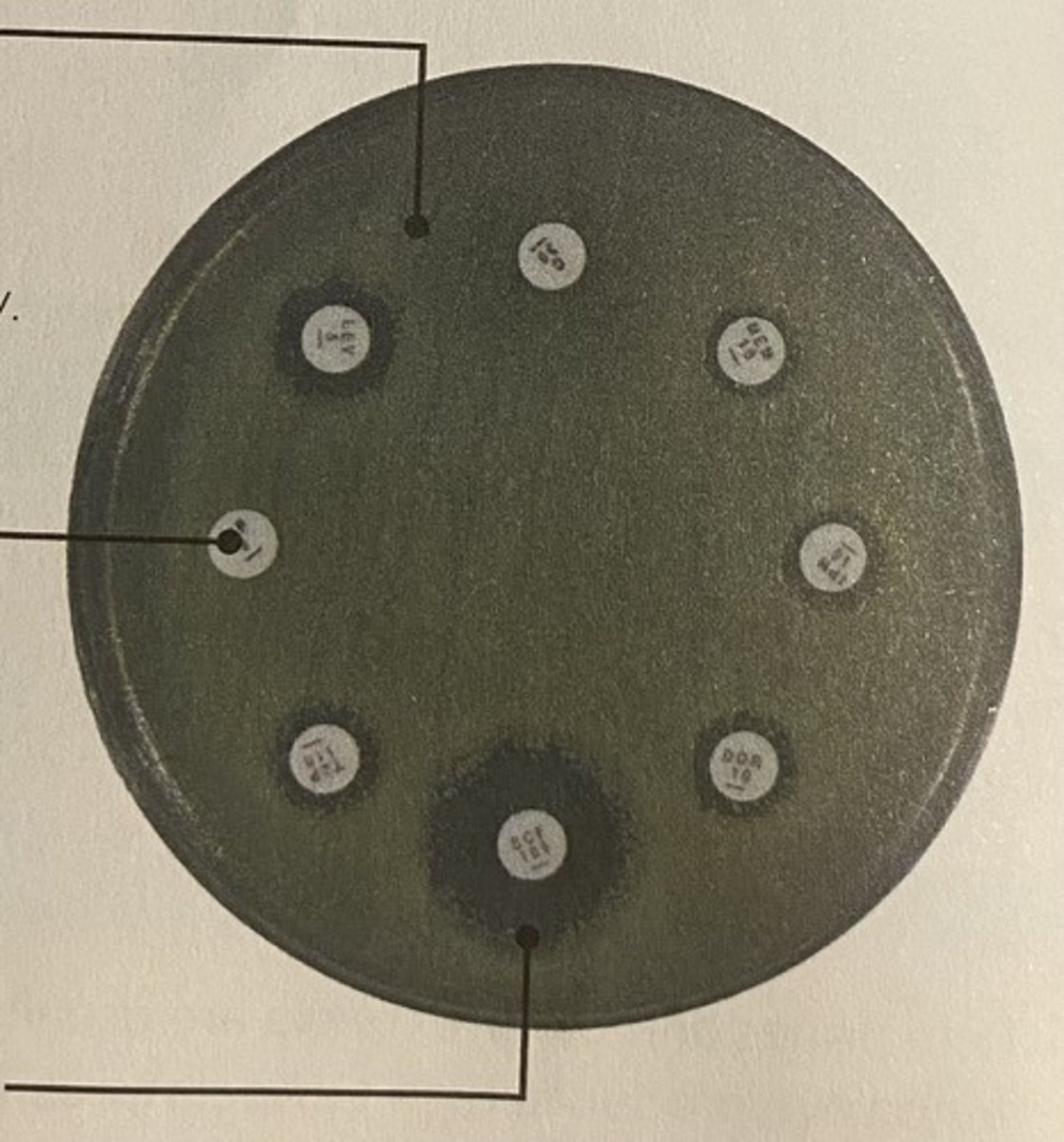
what is needed rather than individual colonies?
even growth called bacterial lawn
what is the clear area around the discs called? + the bigger..?
zone of inhibition, the bigger the better the substance is at preventing growth
what can be difficult to define?
the edges as not always circular
What does the nucleus of a cell contain?
chromosomes made of DNA
RP Using light microscope to observe and draw a selection of plant and animal cells
1. Place a tissue sample on a microscope slide
2. Add a few drops of a suitable stain
3. Lower a coverslip onto the tissue
4. Place the slide on the microscope stage, look through eyepiece lens and focus on the cells using low power objective lens (magnifying)
5. use coarse adjustment knob to focus on cells, fine adjustment knob to focus more clearly
6. Switch to higher power lens
6. Draw any types of cells that can be seen
7. Add a scale line and label
What does each chromosome carry?
thousands of genes
RP what can the aseptic technique be used for?
to find the best type of antibiotic or best concentration of antiseptics to stop the growth of bacteria
how could you repeat measurements?
do identical plates
RP how to compare different antibiotics or antiseptics?
measure diameter of clear area (2 measurements,mean for accuracy), control variables (concentration/volume of substance, size of paper disc, incubation temperature/time), only can make conclusions about bacteria that has been tested.
RP to improve investigation, why could a paper disc soaked in water be tested?
to prove that effects were due to antibiotics not by paper/water
What do genes do and how?
- control the development of different characteristics - by making different proteins
RP light microscope diagram, where is the :
- eyepiece lens
- objective lens
- coarse adjustment knob
- fine adjustment knob
- stage
- condenser
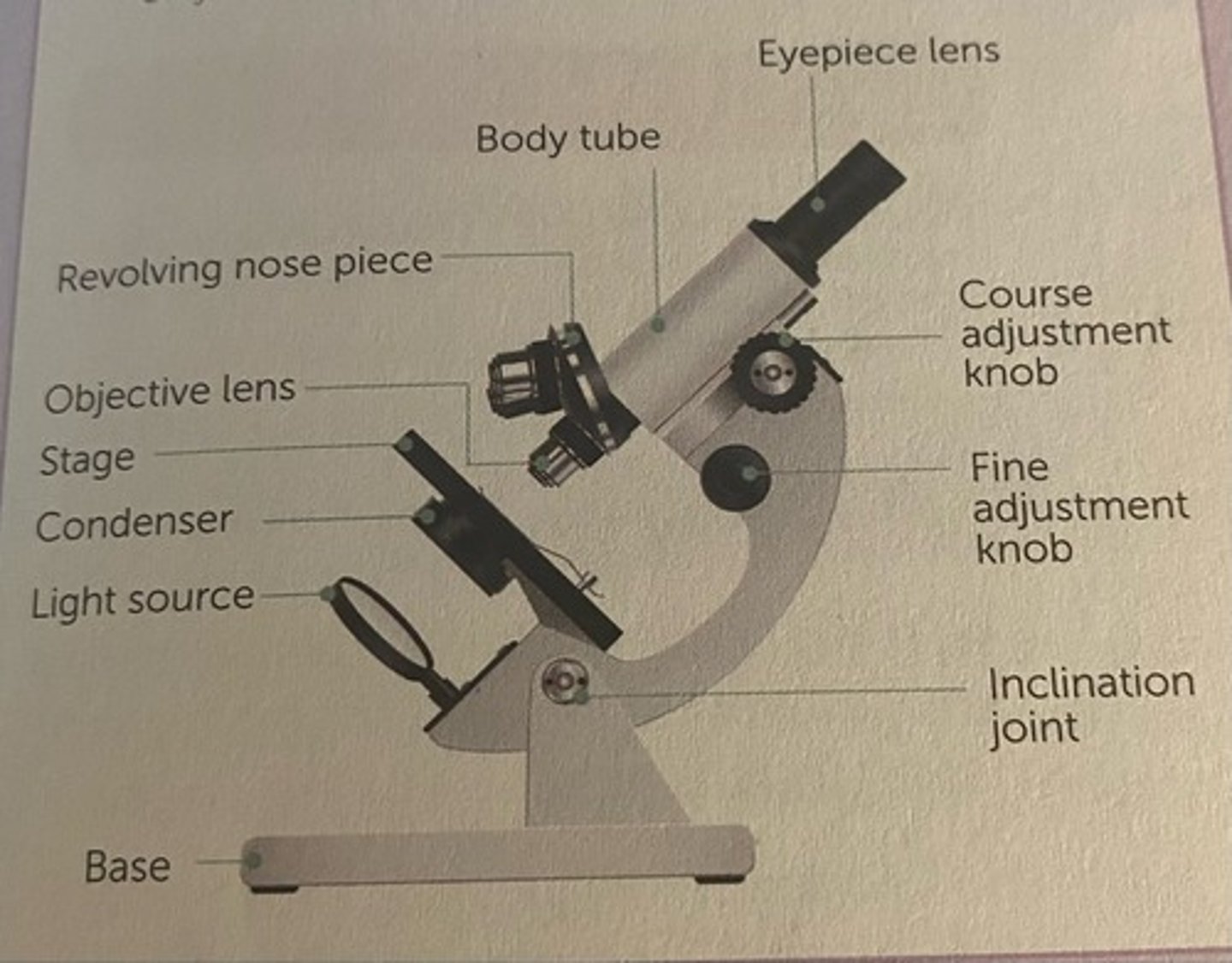
RP how to make a scientific drawing of cells?
- draw as large as space allows
- don't sketch/shade, draw lines you see
- label parts you see + ruler to draw label lines (no arrowheads)
- magnification on the drawing, multiply objective magnifciation by eyepiece magnification
How are chromosomes found? + how many do humans have?
- in pairs
- 23 pairs of chromosomes
What are the series of changes involving cell division called?
cell cycle
Why is cell division by mitosis important? (3 points)
- growth and development of multicellular organisms
- repairing damaged tissues
- asexual reproduction
What is spongy mesophyll?
air spaces between the cells allow gases to diffuse through the leaf
What does having a larger sa-v ratio allow?
- enough molecules to diffuse into and out of the cell to meet the needs of the organism
Define mitosis
- when the cell divides into two identical cells
What must a cell go through before being able to divide?
- cell growth
- genetic material doubles
What stages are involved in the cell cycle? (3 points)
1. cell growth (make new sub-cellular structures - mitochondria and ribosomes ) and DNA is copied to form two identical copies of each chromosome
2. mitosis (replicated chromosomes separate then nucleus divides in two)
3. cell division (cytoplasm + cell membrane divides to form 2 identical cells called daughter cells)

What happens during mitosis?
1. replicated chromosomes join together
2. they move to centre of cell
3. One set of chromosomes is pulled to each end of the cell
4. the nucleus divides (each contains 1 set of chromosomes)

What do red blood cells contain?
haemoglobin - binds to oxygen to transport it from the lungs to the tissues and cells - needed for respiration
Define undifferentiated + example
When cells have not yet become specialised
- early embryo cells
stem cells in adult/mature animals?
- produce limited range of cell types
- function to replace cells that are damaged
- in bone marrow, can produce many types of cells
stem cells in plants?
- found in specialised tissues called meristems
- can differentiate into any type of plant cell throughout the life of the plant
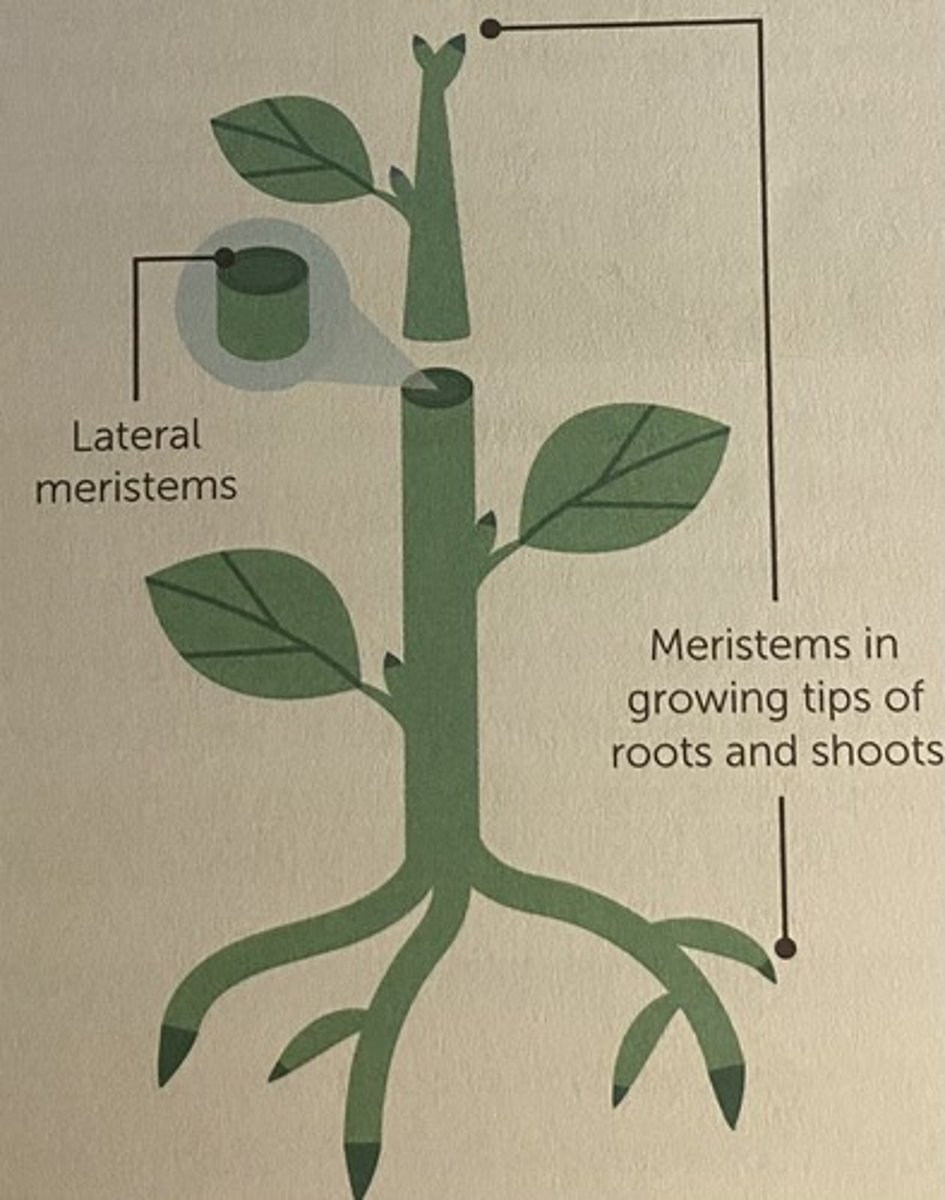
What are stem cells from human embryos called? + how are they used?
- embryonic stem cells
- cloned from embryos into heart, gut, fat and red blood cells + more
What are stem cells?
undifferentiated cells divide to make different types of cells
How can stem cells be used?
- they can be very useful in treating conditions where cells are damaged
- examples: diabetes and paralysis
What is therapeutic cloning?
When a cloned embryo of the patient is made and used as a source of stem cells
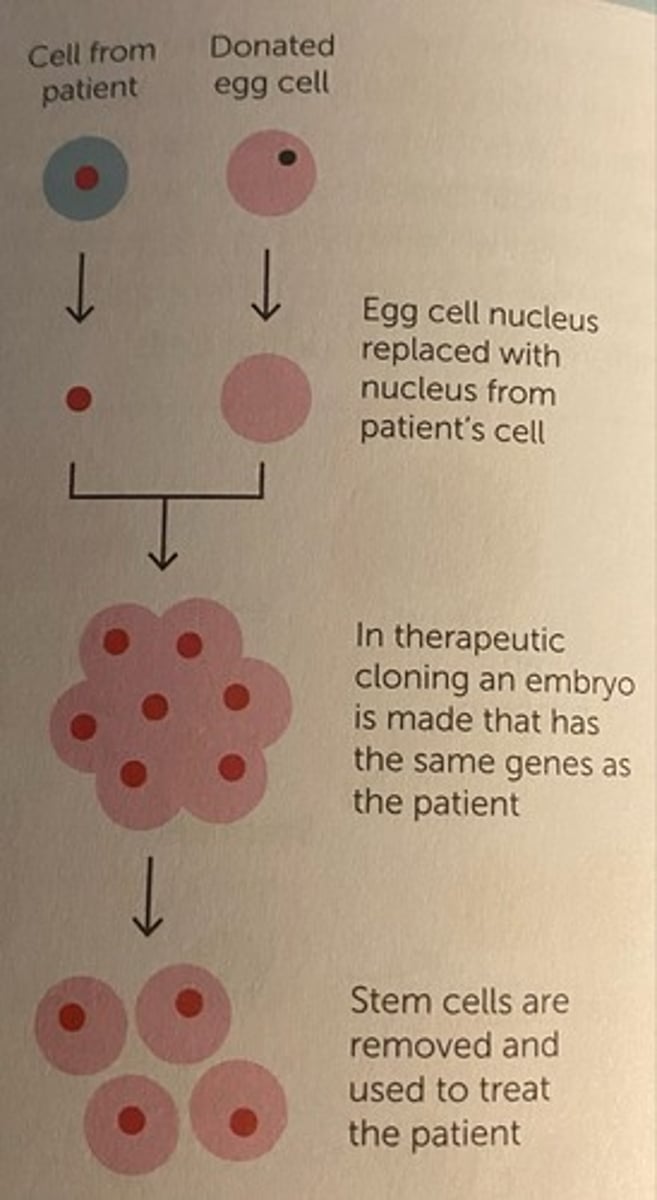
what are the advantages of therapeutic cloning?
- they cannot be rejected by the patient's body as shares the same genes
- treat diseases/replace faulty organs
- produce wider range of cells than is possible from adult stem cells
- many cells produced, can be used in research
What are the disadvanatges of therapeutic cloning?
-may transfer viral infections
- they may have ethical or religious objections (embryo kills potential life)
- unknown side effects
- embryos in short supply + risks of collecting them
Why are plant stem cells useful? (2 points)
- rare species can be cloned to protect them
- large numbers of crop plants with special features can be made e.g. disease resistance
- large number of plants produced quickly + cheaply
what is the point of diffusion?
to move substance in and out of the cell across cell membrane which cells need to do to survive
examples of diffusion?
- oxygen + digested food molecules can move into cells by D
- waste products like carbon dioxide + urea move out of cells by D
what happens when the concentration inside and outside of the cell is the same in diffusion?
particles still move across the membrane, but no net movement in or out
definition of diffusion?
the spreading of moving particles, a net movement from an area of high concentration to low concentration, down a concentration gradient
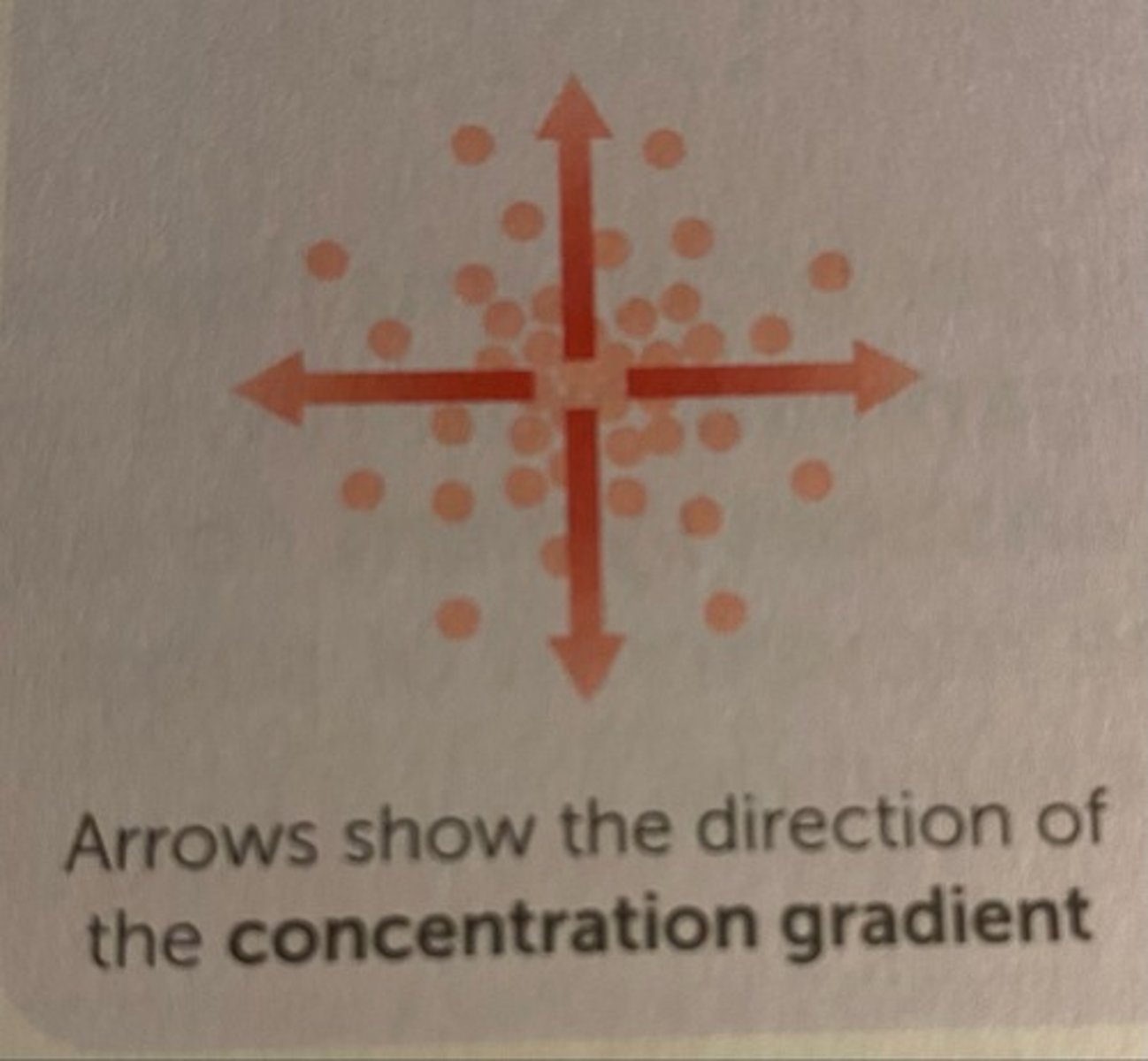
cloning definition?
making genetically identical copies
What are factors that affect diffusion? ( 3points)
- the difference in concentrations - concentration gradient (steeper increase chance of particles moving from high C to low C)
- the temperature (higher increases kinetic energy of particles to move faster which causes diffusion)
- the surface area of the membrane (larger provides more membrane for particles to move across)
What does a single-celled organism/smaller organisms have?
large surface area to volume ratio, this increases exchange by diffusion
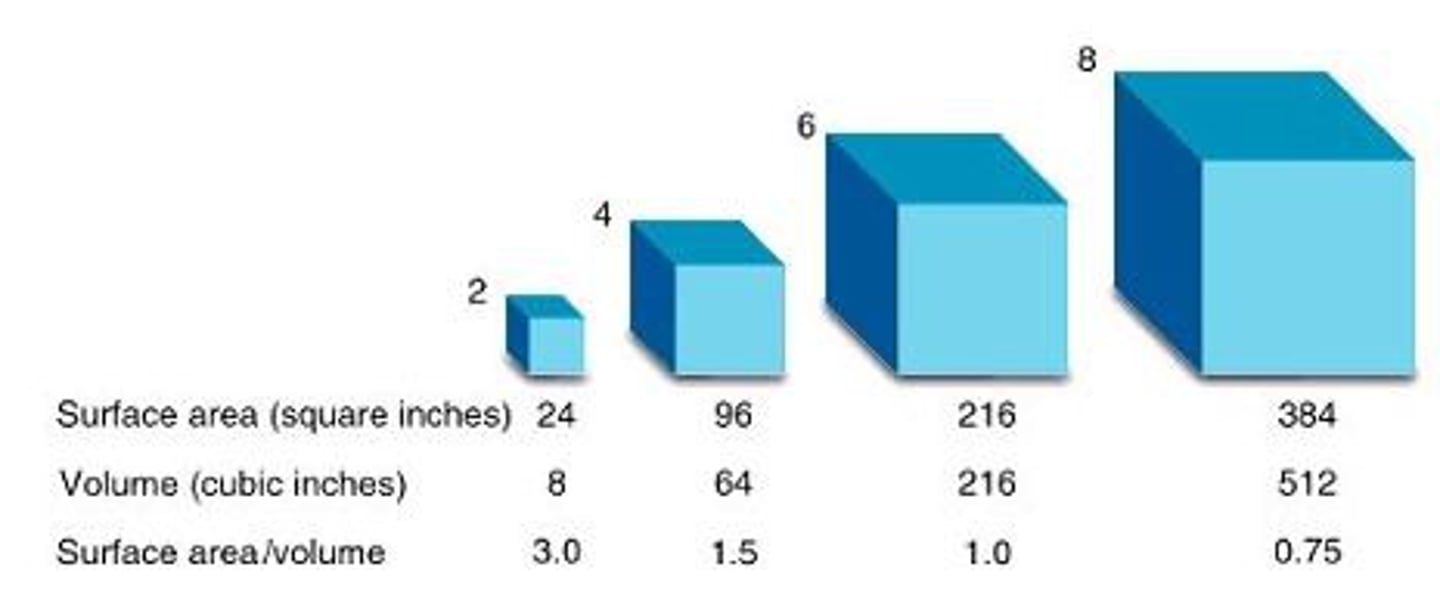
how is diffusion increased across exchange surfaces?
- large surface area(increases area for molecules to diffuse across)
-thin membranes(diffusion distance for particles is short)
-in animals, efficient blood supply + ventilated gas exchange surfaces (increases diffusion by keeping concentration gradient high)
exchange organs in small intestine?
projections of the wall (villi) + epithelial cells (microvilli) increase surface area, wall of villi is thin, well supplied with blood from capillaries
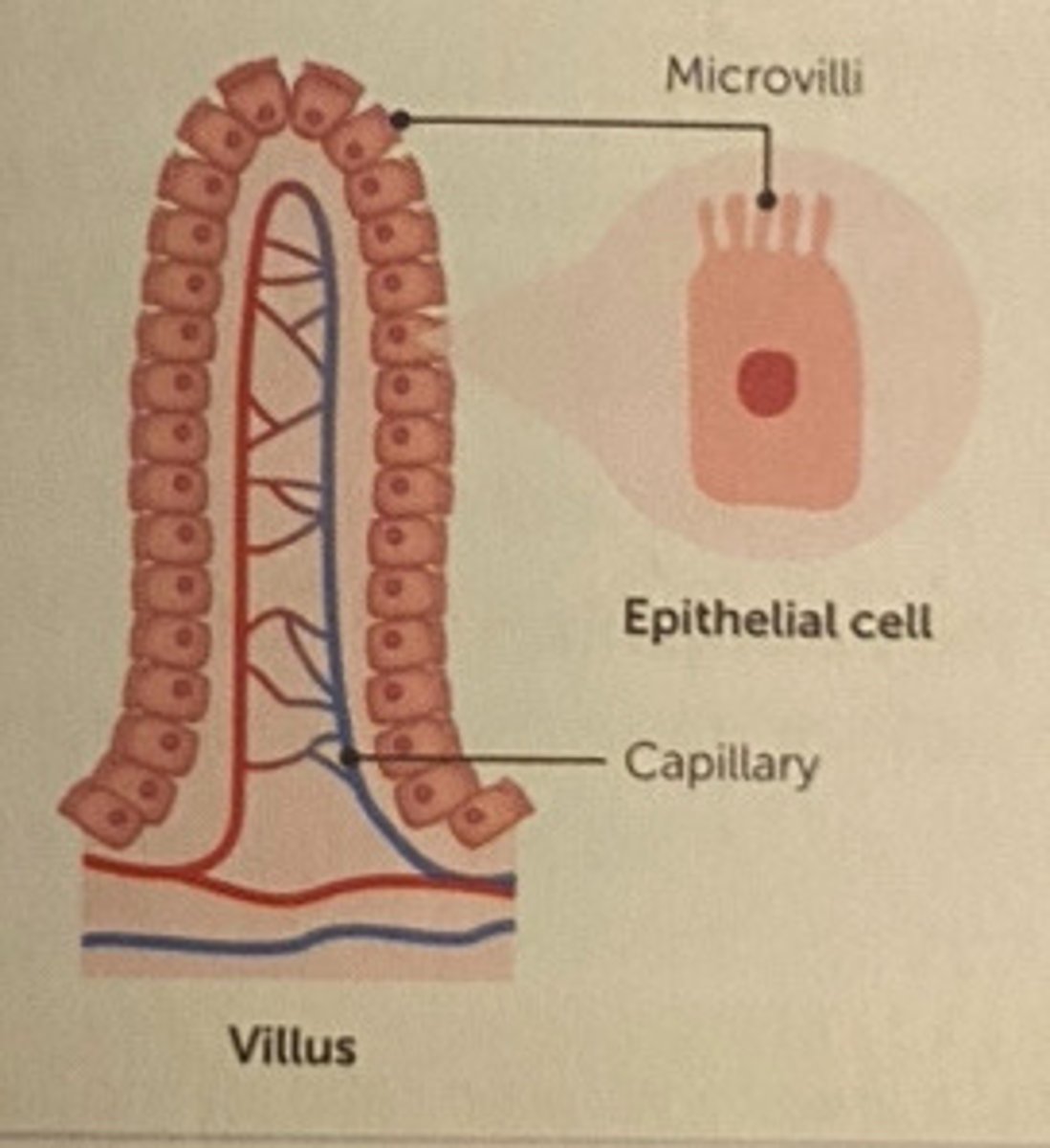
exchange organs in lungs?
large numbers of alveoli increase surface area, each is thin walled + surrounded by capillaries, muscles between ribs and in diaphragm move air in and out (well ventilated)
exchange organs in fish gills?
gill filaments increase surface area, well supplied with blood, thin walled, moves floor of mouth down to draw water in + moves it up to push water out through gill slits (ventilation)
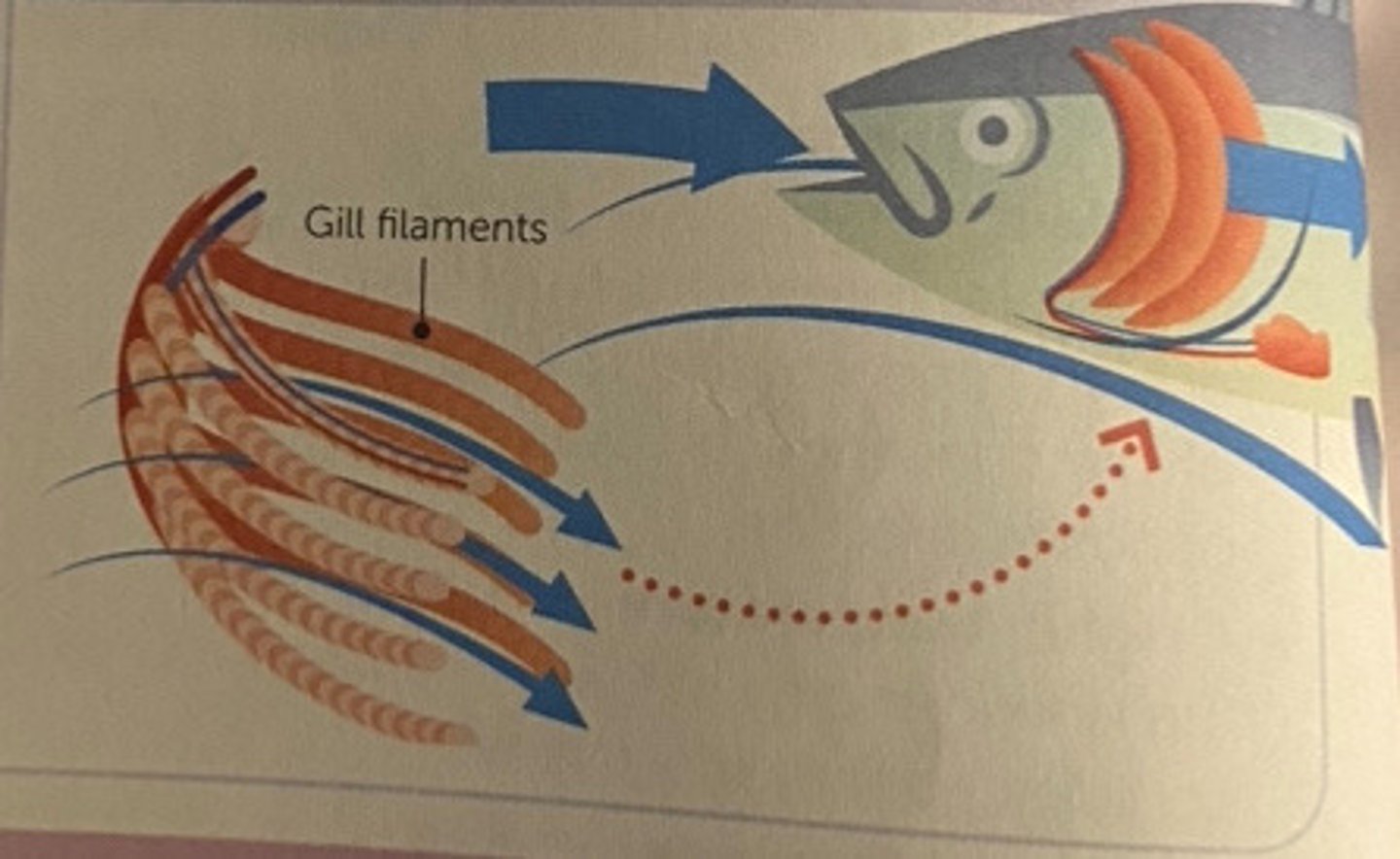
exchange organs in roots and leaves of plant?
increase surface area of roots for absorption of mineral ions + water, leaves have large internal surface area for diffusion of gases + thin
How does the sa-v ratio affect multicellular organisms/bigger organisms?
- they have a smaller sa-v ratio
- have specialised exchange surfaces to survive
what happens during active transport?
can move substances into or out of cell, substances transported using carrier proteins in the cell membrane

Define active transport
this moves substances against a concentration gradient from an area of low concentration to high concentration
in osmosis, how are concentrations of solutions described? + example
in terms of solute molecules
- dilute solutions contains many water molecules + not many solute particles (high conc of water)
- concentrated solution has high conc of solute molecules (lower conc of water molecules)
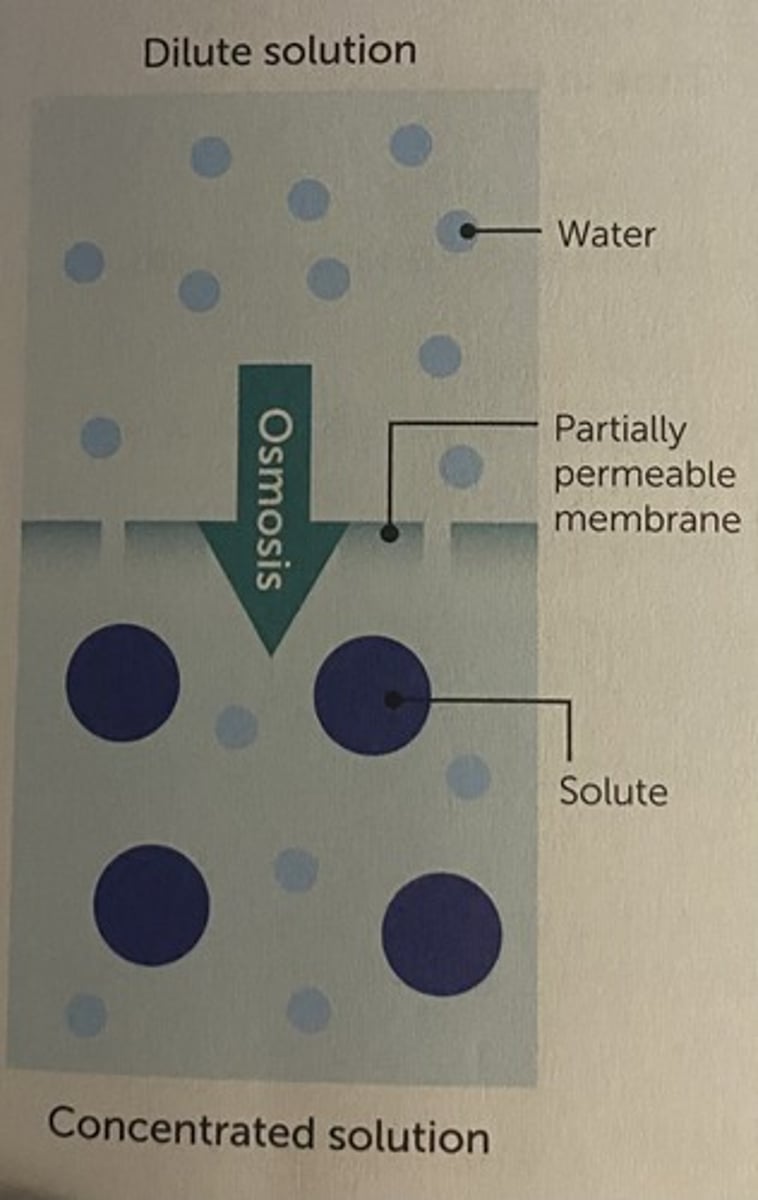
What are examples of things that are adapted for exchanging material? (3 points)
- small intenstine and lungs in mammals
- gills in fish
- roots and leaves in plants
what type of process is osmosis?
passive (no energy needed)
what happens to cells due to osmosis?
can change in size and mass
how can you measure the changes in cells from osmosis?
pieces of plant tissue
what does a plant cell in a dilute solution look like + tell us?
net movement of water into cell, cell volume + mass increase

what does a plant cell in a solution of same concentration look like + tell us?
no net movement of water, cell volume + mass stay the same
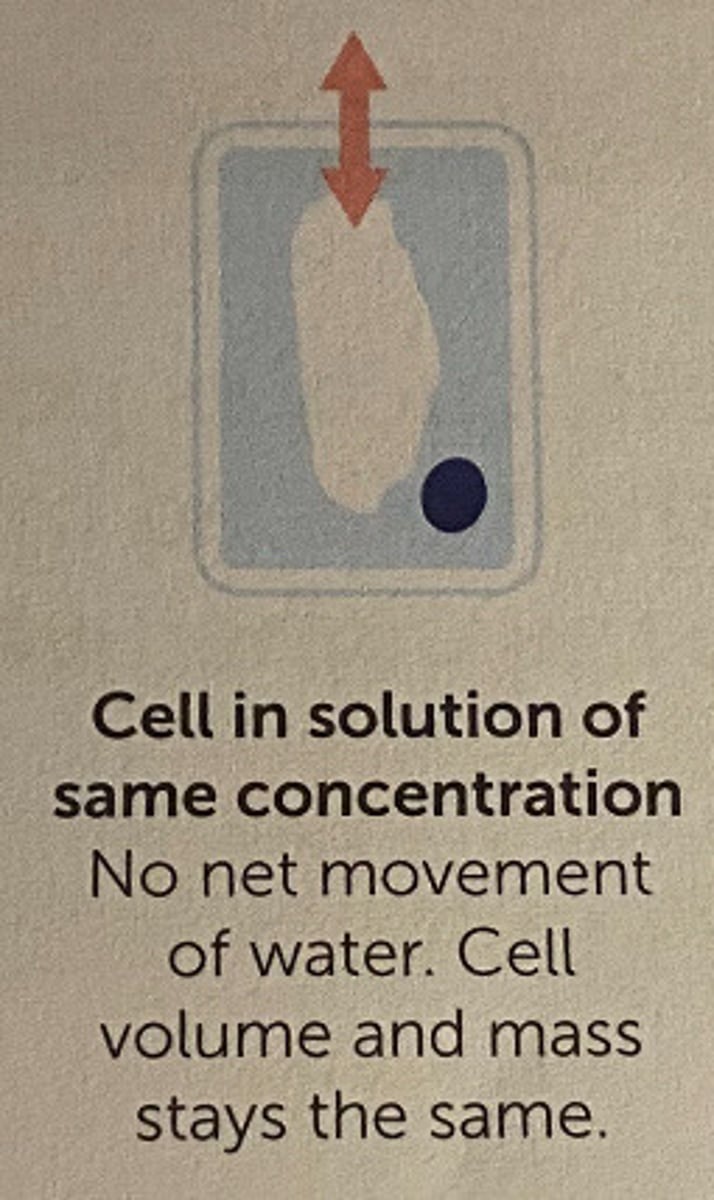
what does a plant cell in a concentrated solution look like + tell us?
net movement of water out of the cell, cell volume + mass decreases, shrinks (flaccid)
